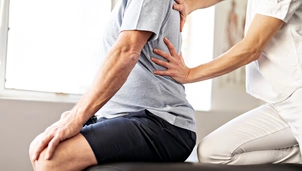Posture, feet and gait
Understanding the underlying causes of your posture, feet or gait issues is crucial in developing an effective treatment plan. At London Spine Clinic, our specialists conduct a thorough evaluation to identify the specific factors contributing to your condition.
Overview of condition
Posture, feet, and gait are integral components of musculoskeletal health and play a crucial role in our overall well-being. Proper alignment and functioning of the feet, along with a balanced gait (walking pattern) and good posture, are essential for optimal movement, stability, and biomechanics.
Feet-related issues can encompass various conditions, such as foot pain, structural abnormalities, arch problems (flat feet or high arches), or toe deformities. Gait refers to the way we walk, including the coordination and movement of the lower limbs. Posture involves the alignment of the spine, shoulders, and pelvis when standing, sitting, or engaging in activities.
At London Spine Clinic, we understand the significant impact that posture, feet and gait problems can have on your daily activities, mobility, and quality of life. Our team of experienced specialists is dedicated to diagnosing and treating these conditions with a comprehensive and personalised approach.
Symptoms
Identifying the symptoms associated with posture, feet and gait issues can help you understand if you may be experiencing related problems. Look out for the following signs:
- Back, hip, knee, or ankle pain: Feet, gait, and posture problems can create imbalances and place additional stress on the surrounding joints, leading to pain in the back, hips, knees, or ankles.
- Poor posture or postural imbalances: Rounded shoulders, forward head posture, or an uneven alignment of the spine are common signs of postural imbalances that may result from feet or gait abnormalities.
- Foot pain or discomfort: Persistent pain or discomfort in the feet, including arches, heels, or toes, can be indicative of underlying issues with foot mechanics, alignment, or muscle imbalances.
- Difficulty walking or maintaining balance: If you find it challenging to walk smoothly or struggle with balance while standing or walking, it may be a result of gait abnormalities, muscular weaknesses, or joint problems.
- Abnormal foot arches (flat feet or high arches): Unusually low or high arches in the feet can lead to imbalances in weight distribution, impacting the stability and function of the feet and potentially causing pain or gait irregularities.
- Uneven wear on shoes: Uneven patterns of wear on the soles of your shoes can be a sign of misalignment or abnormal pressure distribution during walking, suggesting potential gait or posture issues.
- Abnormal foot positioning or toe deformities: Crooked or misaligned toes, toe deformities such as bunions or hammertoes, or noticeable changes in foot shape can indicate underlying structural issues affecting the feet.
- Uneven leg lengths: A noticeable difference in leg lengths, even if slight, can affect your gait and posture, leading to discomfort, imbalances, and potential compensatory issues in other parts of the body. This can result in damage to discs and/or joints in the back due to compensation.
When to see a consultant
Knowing when to seek professional advice can help you address posture, feet and gait problems promptly. Consider consulting with our specialists if you:
- Experience chronic pain in the back, hips, knees, or ankles that may be related to posture or gait issues, particularly if the pain is recurrent or worsening over time.
- Experience recurrent injuries or strains related to walking, running, or maintaining proper posture.
- Have persistent foot pain or discomfort that interferes with your daily activities or quality of life.
- Notice changes in your walking pattern or gait, such as limping, shuffling, or an unsteady gait.
- Have difficulty maintaining balance or stability, increasing your risk of falls or accidents.
- Notice abnormalities in foot shape or positioning, such as flat feet, high arches, or toe deformities.
Causes
Understanding the underlying causes of your posture, feet or gait issues is crucial in developing an effective treatment plan. Problems can arise from a variety of factors, including:
- Structural abnormalities: Certain structural conditions can contribute to posture, feet and gait issues. These may include flat feet (pes planus), high arches (pes cavus), misalignment of the foot bones, or abnormalities in the toes.
- Muscular imbalances: Imbalances in the muscles of the feet, lower limbs, or core can affect gait and posture. Weak or tight muscles, such as those in the calves, thighs, or hip region, can impact how you walk and stand, leading to compensatory movements or postural deviations.
- Injuries or trauma: Previous injuries, accidents, or trauma to the feet, ankles, legs, or spine can disrupt normal movement patterns and alter gait and posture. Fractures, sprains, or ligament damage can result in imbalances or compensatory movements that affect your overall musculoskeletal alignment.
- Neurological conditions: Certain neurological conditions, such as stroke, cerebral palsy, or peripheral neuropathy, can affect muscle control, coordination, and sensation in the feet and lower limbs. These conditions can lead to gait abnormalities or postural changes.
- Age-related changes: As we age, changes in bone density, joint health, and muscle strength can impact feet, gait, and posture. Conditions like osteoarthritis, degenerative disc disease, or spinal stenosis can contribute to altered gait or postural abnormalities.
- Genetic predisposition: Some individuals may have a genetic predisposition to develop certain posture, feet or gait issues. These genetic factors can influence foot structure, joint alignment, or muscle development, increasing the likelihood of developing specific conditions.
- Poor footwear choices: Wearing improper or ill-fitting footwear can negatively affect the feet and contribute to gait abnormalities. High heels, unsupportive shoes, or shoes that do not provide adequate arch support can strain the feet and alter the natural gait pattern.






